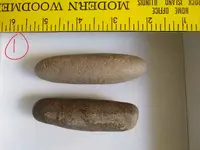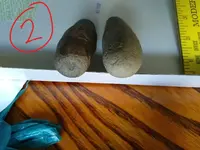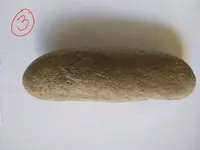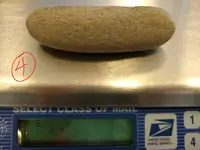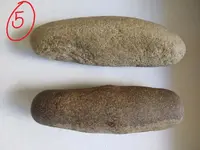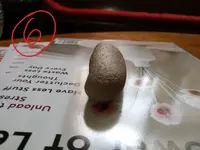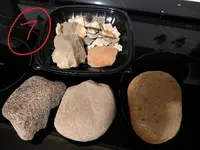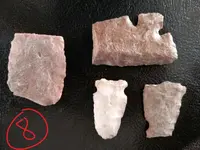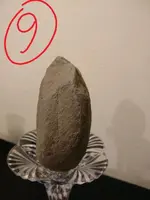They teeter on the edge for me.
Yes they could have been secured with wet rawhide or sinew for example. And would suffice for expedient weights.IF weight suited the users desired weight.
The wear suggests something else.
I'm no whiz with studying pictures though.
They have been handles since recovered. That adds oil. How much they had signs of oil when found could tell more if they were handled a lot prior.
Garscale mentions pestles.
Like others , there's lots of experience with artifacts behind that. More experience than mine.
Georgia , and more specifically the recovery sites and what existed at the time for nuts or grains a pestle would be used on is where I'd look next.
Yes , they could have been used on the flesh side of small thin hides to touch up areas of epidermis the scraper didn't get, but anytime my hand gets cramping ;it's the wrong tool or process...
Again , what existed in the suspected era? Pine nuts?
Were feather quills flattened before cutting?
Porcupines are not known (to me anyways) to have been in the state.
(A trader from Florida wanted them up here in the midwest years back at a shoot.)
Those quills are flattened to work with for quill work. I tried a knife back. A long enough pestle shape could be dragged along them.A thumb rest would help.
So , congrats on the relics. But I don't know what the suspected weights were used for for sure.
Context of the area and previously identified relics might help.
Though not all i.d.'s are accurate.




